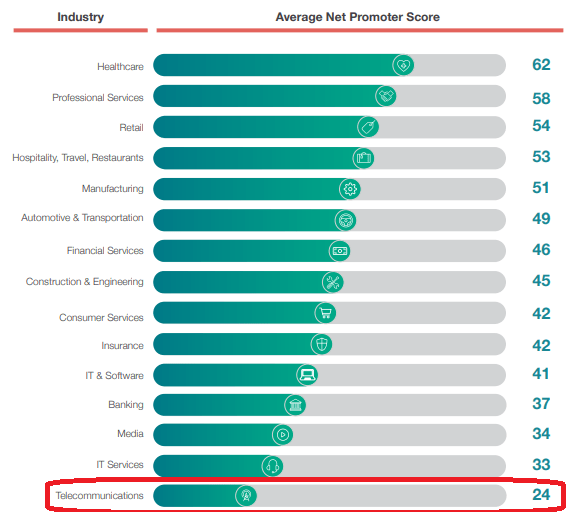
With a Net Promoter Score (NPS) average of 24, telecom holds the lowest industry average according to the NPS Benchmarks Report. Operational inefficiencies in contact centers play a major role in the low NPS for Digital Service Providers (DSPs).
Most DSPs have been struggling with high call volumes and costs for a long time, and the pandemic has further caused an unprecedented spike in call volume. As the number of calls keeps increasing, it becomes difficult for contact center representatives to handle customer queries quickly and efficiently. A longer wait time to contact a representative degrades the customer experience.
Common challenges in a traditional contact center are as below:
- Slow & complex digital initiatives – The adoption of digital strategies and channels is very slow. Gartner says only 9% of customers report solving their issues completely via self-service. More channels create complex customer resolution journeys, as customers switch channels frequently.
- Multiple siloed systems – Agent navigates through multiple systems to gather information and identify solutions before responding, which leads to high average handling time (AHT).
- Reactive handling – Agents start troubleshooting only after the customer is already impacted and calls in.
- Unproductive monitoring mechanism for agents – Ineffective monitoring of agents’ performance impacts efficiency.
No end-to-end dashboard – Lack of unified dashboard that gives an end-to-end view of the contact center.
To create a great customer experience, DSPs need to transform their traditional contact center with digital technologies as stated below:
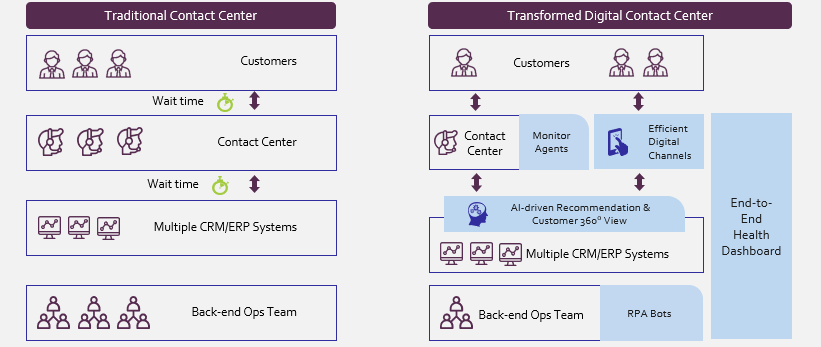
Fig. Potential areas for transformation in a contact center using digital technologies
Key enablers to digitize DSPs’ contact center for improving NPS and reducing call volume
1. Digital-first model
Self-service and all deflection leveraging the digital-first model helps DSPs to improve digital channel adoption. Digital-first model with AI-based conversation engine integrates with backend systems, RPA bots, and AI models. It helps in implementing contextual communication, i.e., using customer-specific information to perform pre-validation and smart diagnostics for resolving the customer request in a single conversation, improving chat containment rate for DSPs. It also enables carry-over context by continuing the customer conversation from where they left last time in any of the digital channels.
We recommend DSPs start with one communication channel based on the customer segment and focus on increasing the adoption rate with enhanced customer experience.
The digital-first model helps in deflecting 20%-25% of the calls, reducing the abandonment rate from >20% to <5% and improving the chat containment rate by 50%.
2. Smart agent console
Smart agent console acts as a one-stop window for agents to quickly access details and effectively resolve queries using the next best recommendations. It has customer 360°, AI engine, and assisted bots in the back-end that are cloud-agnostic. Customer 360° and AI engine get triggered when the customer is in IVR and has opted for his call to be transferred to an agent.
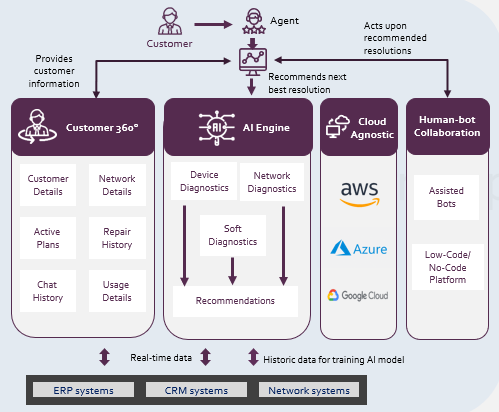
Fig. Smart agent console and its back-end components
Customer 360° connects to multiple systems to fetch the required customer information, reduce swivel-chair efforts, and average call duration with the customer. AI engine performs diagnostics in the back-end and listens in the conversations, then assists the agent by recommending the next best actions & responses based on the results of the diagnostics. It prevents system & customer biased recommendations as it pulls data from all the systems. Assisted bots are integrated with the agent console to implement the recommended resolutions, which helps in improving the agent’s productivity.
Building a smart console helps DSPs to reduce the AHT by 40%-60%.
3. Contact Center transformation dashboard
Building a transformational dashboard leads to better governance, increased utilization & productivity, saving recurring annualized costs for DSPs. Most of the DSPs have contact center tools with inbuilt standard metrics tracking mechanism. But we recommend DSPs to track the below key metrics as well, which can help them gain insights and improvement ideas.
a) The dashboard should track metrics from calls, self-service, and all the other such channels across the contact center in a single view as shown below.
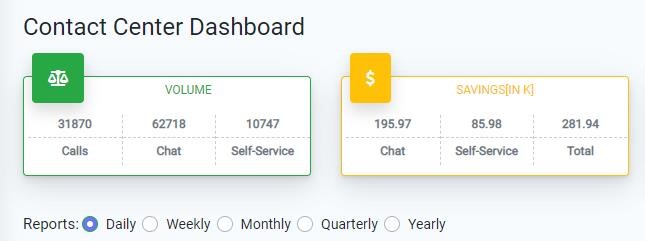
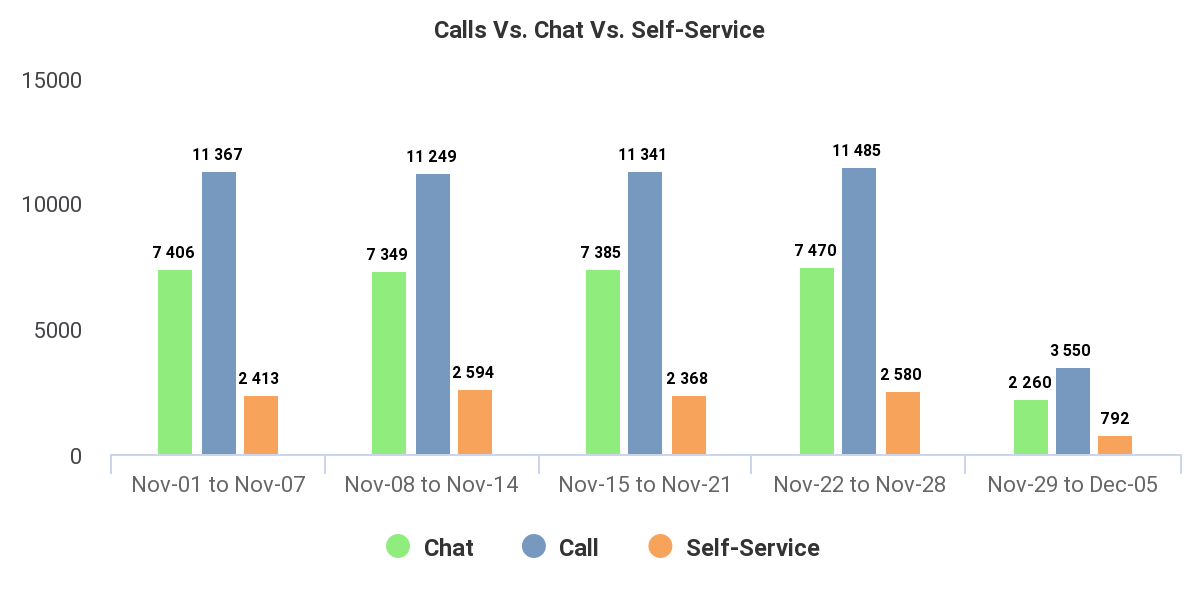
b) The dashboard should compare all these metrics to evaluate the performance and identify improvement areas (e.g., in the below image, the dashboard compares call deflection metrics to identify top call drivers).
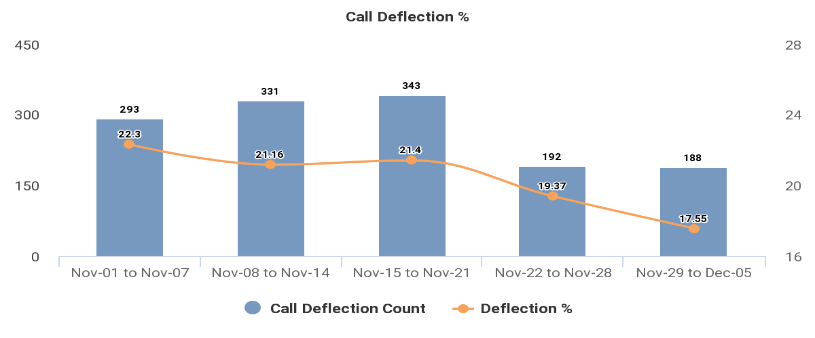
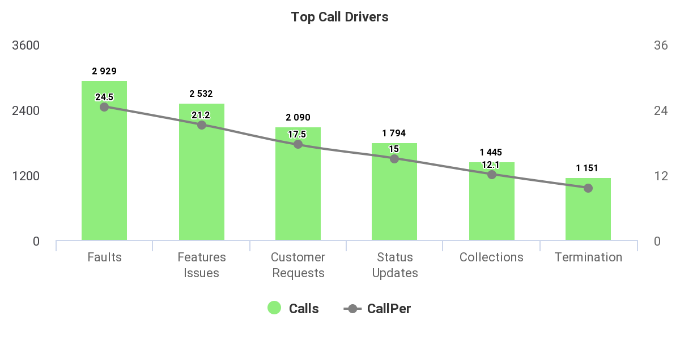
Track average call time for various categories to identify target areas for improvement
c) The dashboard should monitor the agent in real-time and notify the supervisor when they surpass pre-set threshold limit. This helps DSPs to improve agent productivity. Bot notifies the supervisor by sending alerts, helping the business unit with 12%-14% of effort savings and improving audits.
In conclusion…
With these enablers presented in this article, DSPs can digitize their contact center. Implementing them helps DSPs to improve the NPS score by 20-30%, reduce call volume up to 40%, and save OpEx by 30%. Empowering contact center agents with digital capabilities can yield a 30% improvement in productivity.
By Rajesh Khanna

Director – Delivery Lean/Consultant
Rajesh Khanna has 20+ years of experience in the IT/ITES/Telecom Industry leads RPA Delivery & Process Consulting team in Chennai, India focusing on Automation and Transformation projects across different accounts. He is instrumental in streamlining and optimizing operations by implementing Robotic Process Automation (RPA).
Rajesh is a certified Lean practitioner and ISO auditor. He has led process improvement initiatives through lean six sigma methodologies, automation, and kaizen. Executed multiple consulting projects aiming at eliminating waste, improving accuracy, cost-benefit, cycle time reduction, productivity improvement directly impacting the bottom line.
